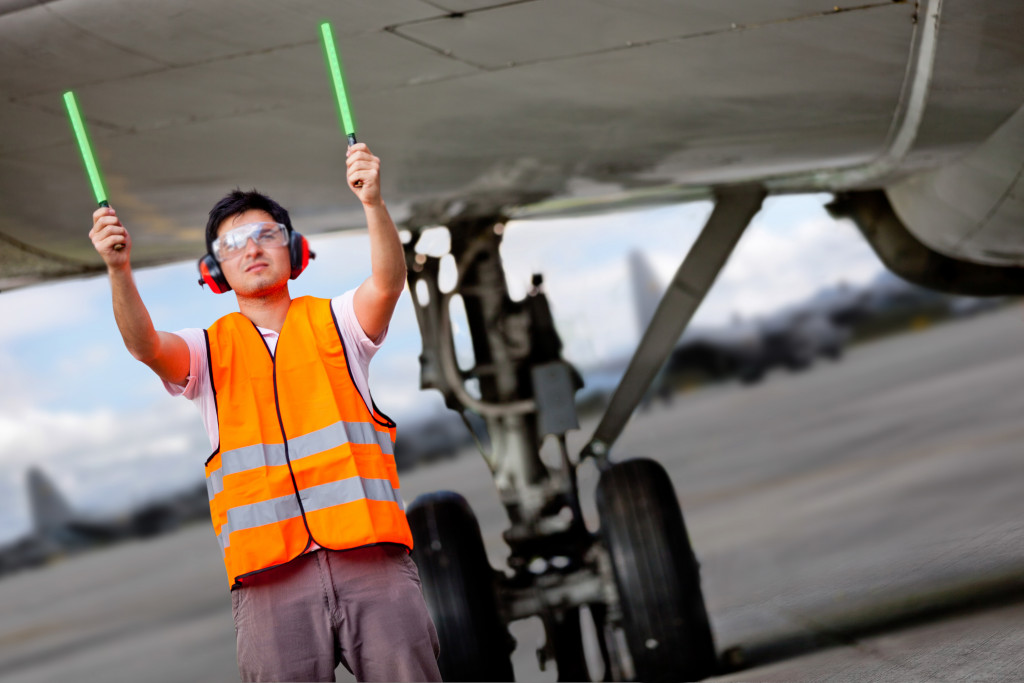- Perform a pre-flight check and ensure the aircraft is in proper condition for flight.
- Ensure you are licensed and qualified to fly the kind of aircraft that you are using.
- Always wear the appropriate safety gear to ensure your safety and any passengers or crew.
- Stay aware of your surroundings to identify any potential hazards or obstacles.
- Follow proper emergency procedures when faced with an in-flight emergency, and prioritize adequate maintenance to keep your aircraft in optimal condition.
Flying an aircraft is an exhilarating experience, but it’s also essential to prioritize safety when taking to the skies. Whether you’re a seasoned pilot or new to flying, there are several essential safety tips to ensure a safe, enjoyable flight. This blog post will cover some basic safety tips when flying an aircraft.
1. Perform a pre-flight check.
Before taking off, it’s crucial to perform a thorough pre-flight check. This involves inspecting the aircraft for any signs of damage or wear and tear, verifying fuel and oil levels, and checking the condition and functionality of all onboard systems and controls. It’s also essential to review the weather forecast and to avoid flying in adverse weather conditions or during poor visibility. If the aircraft is not in a proper condition for flight, do not fly until all issues are resolved and the plane passes inspection.

2. Ensure you are licensed and qualified.
Before taking to the skies, ensure you are licensed and qualified to fly the aircraft. This means possessing a valid pilot’s license and being familiar with the type of aircraft you’re flying. It’s also essential to take a refresher course or perform some practice flights when switching to a different plane.
If you want to fly a different vehicle, you must get certified for that specific aircraft type. For example, a commercial multi-engine aircraft requires a different license than a single-engine private craft. To be able to fly the former, you need to complete a commercial multi-engine pilot training course and obtain the required licenses and certifications.
3. Always wear the appropriate safety gear.
Make sure always to wear the appropriate safety gear when flying an aircraft. This includes a properly-fitted helmet, comfortable and supportive shoes, and any other protective equipment necessary for the specific type of aircraft you’re flying. It’s also essential to ensure that all passengers and crew members onboard are appropriately equipped with basic safety gear.
4. Stay aware of your surroundings.
When flying an aircraft, you must stay aware of your surroundings constantly and maintain situational awareness. This involves watching for other aircraft in the vicinity, paying attention to air traffic control instructions, and being aware of any potential hazards or obstacles in your flight path. Additionally, be sure to maintain a safe distance from other aircraft and to use caution when performing any maneuvers or turns.
5. Follow proper emergency procedures.
In the event of an emergency, it’s crucial to remain calm and follow proper emergency procedures. Panicking or making rash decisions can only put you and your passengers in greater danger. In the event of an emergency, make sure you do the following:

a. Communicate with air traffic control.
The first step in any emergency is to inform air traffic control of the issue and your location. This allows them to take the necessary steps to protect the safety of everyone in the air.
b. Utilize the aircraft’s emergency systems.
Most modern aircraft are equipped with emergency systems, which can safely navigate the aircraft out of an emergency. Make sure to familiarize yourself with these systems and how to use them before take-off.
c. Follow the emergency checklist.
Review and follow the aircraft’s emergency checklist, including a comprehensive list of procedures and protocols. If you are unsure what to do in an emergency, refer to the checklist for guidance.
d. Land the aircraft as soon as possible.
Finally, make sure to land the aircraft as soon as possible. You can usually land the plane safely in an open field or other flat areas. It’s also essential to keep passengers informed of the situation and any steps you’re taking to address the emergency.
6. Prioritize proper maintenance and upkeep
Maintaining proper upkeep and maintenance of your aircraft is one of the most important safety measures you can take as a pilot. This includes regularly inspecting and maintaining all systems and components, following the recommended maintenance schedule for your aircraft, and addressing any issues or concerns as soon as they arise. Keeping a detailed log of all maintenance and repairs performed on your plane is also essential.
Flying an aircraft can be a thrilling and rewarding experience, but it’s crucial to prioritize safety above all else. By following these essential safety tips, you can help ensure a safe and enjoyable flight for you and your passengers. Always maintain situational awareness, follow emergency protocols, and stay up-to-date on maintenance for your aircraft. With these precautions in place, you can ensure that your next flight is safe and enjoyable.
